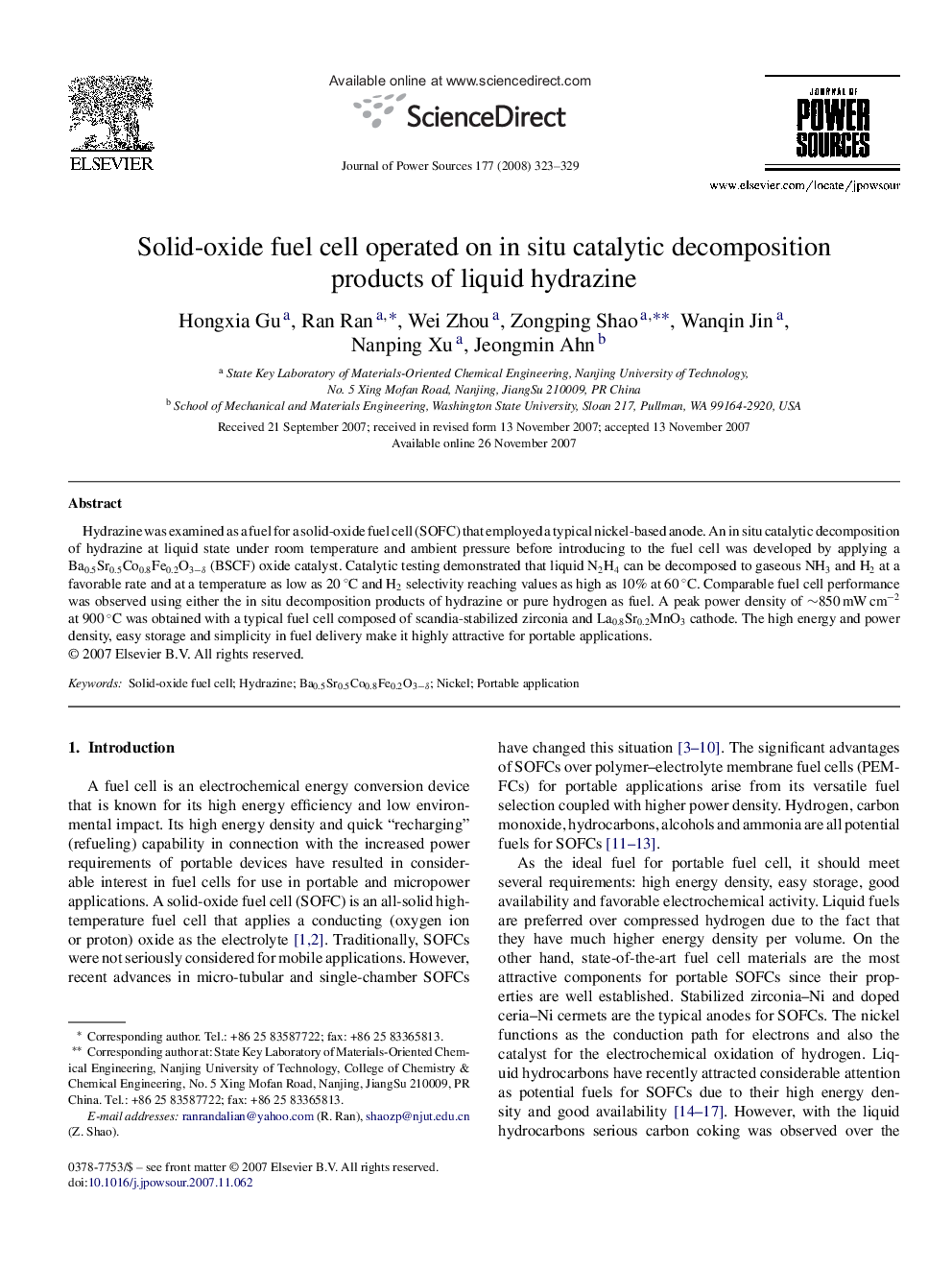| Article ID | Journal | Published Year | Pages | File Type |
|---|---|---|---|---|
| 1285578 | Journal of Power Sources | 2008 | 7 Pages |
Hydrazine was examined as a fuel for a solid-oxide fuel cell (SOFC) that employed a typical nickel-based anode. An in situ catalytic decomposition of hydrazine at liquid state under room temperature and ambient pressure before introducing to the fuel cell was developed by applying a Ba0.5Sr0.5Co0.8Fe0.2O3−δ (BSCF) oxide catalyst. Catalytic testing demonstrated that liquid N2H4 can be decomposed to gaseous NH3 and H2 at a favorable rate and at a temperature as low as 20 °C and H2 selectivity reaching values as high as 10% at 60 °C. Comparable fuel cell performance was observed using either the in situ decomposition products of hydrazine or pure hydrogen as fuel. A peak power density of ∼850 mW cm−2 at 900 °C was obtained with a typical fuel cell composed of scandia-stabilized zirconia and La0.8Sr0.2MnO3 cathode. The high energy and power density, easy storage and simplicity in fuel delivery make it highly attractive for portable applications.
